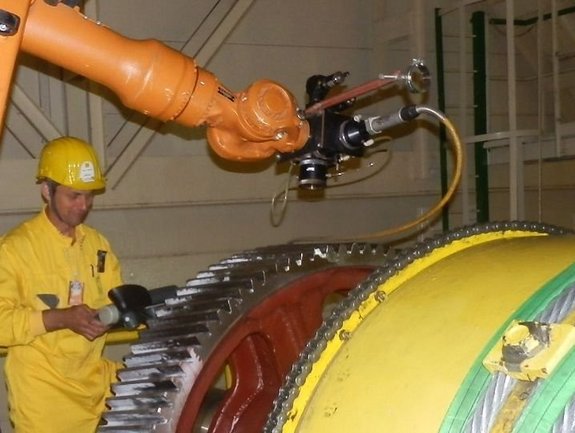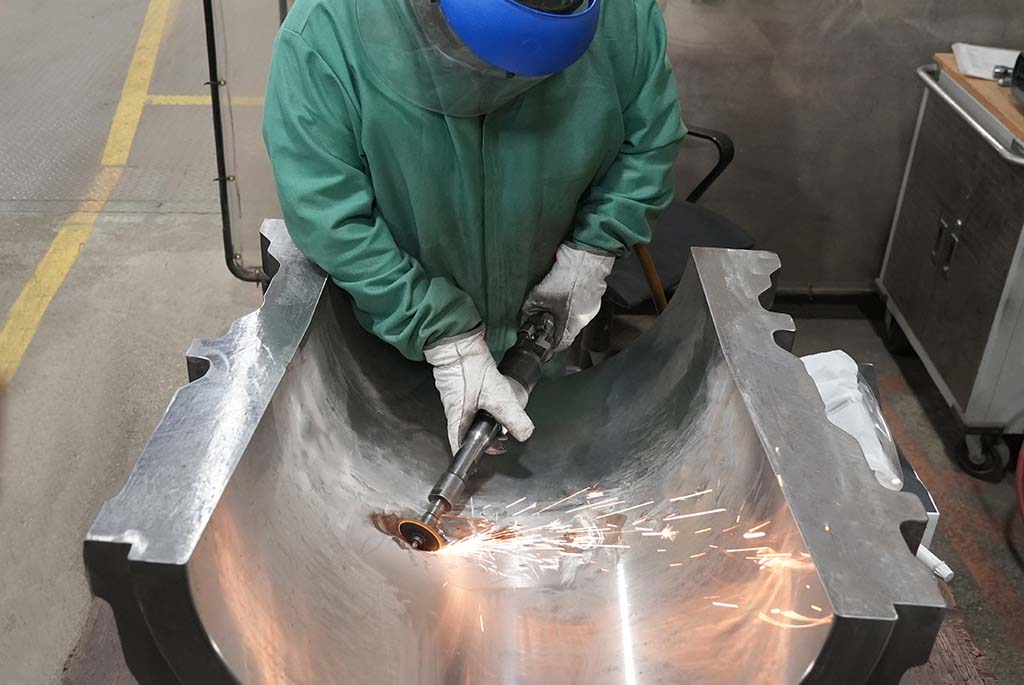Why welds crack and how Montana Mobile Welding and Repair avoids them
Usual Welding Repair Issues and Exactly How to Address Them Effectively
Welding repair services commonly run into a variety of problems that can jeopardize the honesty of the end product. Typical problems include poor infiltration, porosity, and imbalance, amongst others. Each issue presents special difficulties that call for specific strategies for resolution. Understanding these issues is crucial for welders aiming to boost their abilities and results. This conversation will check out these usual welding repair work concerns and effective approaches to address them.
Inadequate Infiltration
Poor infiltration occurs when the weld metal stops working to fully fuse with the base material, resulting in weak joints and prospective architectural failures. This concern typically originates from inadequate warmth input, wrong electrode angle, or improper welding rate. Welders may encounter inadequate infiltration as a result of a miscalculation of the required specifications for a particular product density or type. In addition, contamination on the base product's surface area can prevent effective bonding, exacerbating the trouble. To address inadequate penetration, welders should ensure suitable settings on their equipment and keep a clean job surface area. Normal evaluation of welds is advised to identify any deficiencies early, permitting prompt corrections and the prevention of jeopardized architectural honesty in bonded assemblies.
Porosity
Porosity is an usual issue in welded joints that materializes as small gas bubbles trapped within the weld steel. This flaw can jeopardize the integrity of the weld, resulting in reduced stamina and prospective failure under tension. Montana Mobile Welding and Repair. Porosity usually develops from contamination, moisture, or inappropriate welding techniques, which enable gases to escape into the liquified weld swimming pool. To attend to porosity, welders should assure correct surface preparation, maintain a tidy working setting, and utilize suitable welding specifications. Furthermore, picking the appropriate filler product and protecting gas can alleviate gas entrapment. Normal assessment and testing of welds can assist recognize porosity early, assuring timely corrective activities are taken, thus preserving the high quality and integrity of the bonded structure
Imbalance
Imbalance in welding can arise from different elements, consisting of incorrect setup and thermal expansion. Comprehending the origin is essential for efficient resolution. Numerous improvement methods are offered to straighten elements and assure structural integrity.
Reasons for Misalignment
Welding imbalance typically originates from a range of underlying concerns that can endanger structural honesty. One key cause is improper fit-up of parts prior to welding, which can result in voids and unequal surfaces. Variations in thermal development during the welding procedure can likewise result in distortion, particularly if the materials being signed up with have different coefficients of development. Furthermore, inadequate securing and fixturing might fail to hold parts securely in position, leading to motion during welding. Badly maintained equipment, including welding equipments and tools, may present inconsistencies in the weld bead, additional adding to misalignment. Lastly, operator mistake, coming from not enough training or experience, can also play a substantial role in producing misaligned welds.
Adjustment Strategies Readily Available
Resolving imbalance properly requires a mix of corrective methods customized to the specific problems available. One typical technique is the usage of fixtures or jigs to hold elements in the correct setting during welding, making sure consistent placement. Additionally, pre-heating the products can help in reducing distortion and boost fit-up. For substantial misalignment, mechanical realignment methods, such as using hydraulic jacks or clamps, can be utilized to deal with the position before welding. Post-weld warm therapy might also be needed to relieve stresses triggered by misalignment. Careful evaluation and adjustment throughout the arrangement stage can stop imbalance concerns from ending up being considerable troubles, promoting a smoother welding process and boosting general structural honesty.
Distortion
Distortion is an usual obstacle in welding that can arise from different factors, including irregular heating and air conditioning. Recognizing the reasons for distortion is essential for executing efficient prevention strategies. Resolving this issue not only enhances architectural stability yet also boosts the overall quality of the weld.
Reasons for Distortion
When subjected to the intense warmth of welding, materials usually undertake adjustments that can result in distortion. This phenomenon mostly occurs from thermal development and tightening throughout the welding procedure. As the weld location warms up, the material increases; upon air conditioning, it acquires, which can produce interior tensions. In enhancement, irregular home heating across a workpiece can exacerbate these stresses, leading to bending or bending. The kind of material read more likewise plays a considerable duty; metals with varying thermal conductivity and coefficients of expansion might respond in different ways, resulting in uncertain distortions. Inadequate joint layout and insufficient fixturing can contribute to misalignment throughout welding, raising the possibility of distortion. Comprehending these causes is essential for reliable welding repair service and prevention techniques.
Avoidance Techniques
Reliable prevention techniques for distortion throughout welding concentrate on regulating heat input and making sure proper joint layout. Preserving a regular heat input aids to lessen thermal growth and contraction, which can result in distortion. Utilizing strategies such as preheating the work surface can additionally lower the temperature gradient, promoting consistent heating. Furthermore, selecting proper joint styles, such as T-joints or lap joints, can improve security and decrease stress and anxiety concentrations. Executing appropriate fixturing to secure the workpieces in place additionally help in preserving alignment during the welding process. Staggered welding series can distribute heat a lot more equally, avoiding local distortion. By using these techniques, welders can significantly reduce the likelihood of distortion and enhance the overall top quality of their welds.
Cracking
Cracking is a common issue encountered in welding repair work, often arising from different elements such as incorrect cooling rates, product choice, or inadequate joint preparation. The occurrence of fractures can greatly jeopardize the integrity of the weld, causing possible failures during procedure. To resolve this problem, welders have to initially assess the root triggers, ensuring that materials work and suitably picked for the certain application. Additionally, regulating the air conditioning rate throughout the welding process is important; rapid air conditioning can cause stress and bring about fracturing. Appropriate joint style and prep work additionally contribute to decreasing the risk. Executing these strategies can improve weld top quality and durability, ultimately reducing the possibility of fracturing in ended up weldments.

Insufficient Blend
A considerable issue in welding fixings is insufficient fusion, which occurs when the weld steel does not sufficiently bond with the base material or previous weld passes - Montana Mobile Welding and Repair. This issue can bring about weak points in the joint, potentially jeopardizing the honesty of the bonded framework. Elements adding to insufficient blend consist of inadequate heat input, incorrect welding strategy, and contamination of the surface areas being signed up with. To address this concern effectively, welders ought to ensure appropriate pre-weld cleansing and surface area prep work, along with change their welding specifications to attain appropriate penetration and fusion. Normal inspection throughout the welding procedure can likewise assist identify insufficient fusion early, permitting timely corrective measures to boost the total top quality of the weld
Overheating
While welding repair work can boost architectural stability, overheating presents a significant obstacle that can bring about product destruction. Excessive heat throughout welding can change the mechanical buildings of metals, causing decreased stamina, enhanced brittleness, and warping. This sensation is especially important in high-stress applications where architectural reliability is paramount. Determining overheating can entail visual examinations for staining or distortion, along with keeping track of temperature during the welding procedure. To alleviate the threats linked with getting too hot, welders need to employ appropriate strategies, such as regulating warm input, adjusting travel speed, and making use of suitable filler products. Furthermore, applying pre- and post-weld warm treatments can assist recover product buildings and improve the general quality of the repair, ensuring long-term efficiency and safety and security.
Frequently Asked Inquiries
What Are the Common Indicators of a Welding Issue?

Exactly How Can I Examine My Welds for Top quality?
To check welds for high quality, one can make use of aesthetic evaluations, ultrasonic testing, and radiographic approaches. Each method assures structural honesty, determines flaws, and confirms adherence to defined requirements, inevitably enhancing the integrity of the welded joints.
What Security Preventative Measures Should I Take While Welding?
When welding, one ought to prioritize security by putting on suitable personal protective devices, making certain appropriate air flow, securing combustible products away, maintaining a tidy workspace, and being conscious of environments to avoid injuries and crashes.
Can I Fix a Weld Without Remodeling the Entire Joint?
Repairing a weld without redesigning the whole joint is feasible, relying on the damages (Montana Mobile Welding and Repair Belgrade Welding). Techniques such as grinding, adding filler material, or utilizing a welding procedure can successfully resolve certain defects while protecting the surrounding framework
What Devices Are Crucial for Effective Welding Repair Works?
Essential tools for effective welding repair services consist of a welding machine, wire brush, grinder, safety equipment, clamps, and filler materials. Each device plays a crucial function in making certain quality and safety during the repair service process. Porosity commonly develops from contamination, moisture, or inappropriate welding methods, which permit gases to leave into the molten weld swimming pool. Improperly conserved equipment, consisting of welding equipments and devices, might introduce disparities in the weld grain, further adding to misalignment. When subjected to the intense warm of welding, materials commonly undergo modifications that can lead to distortion. Breaking is a typical issue run into in welding repairs, often resulting from various variables such as improper cooling prices, material selection, or inadequate joint prep work. A substantial problem in welding repair services is incomplete blend, which happens when the weld metal does not properly bond with the base product or previous weld passes.